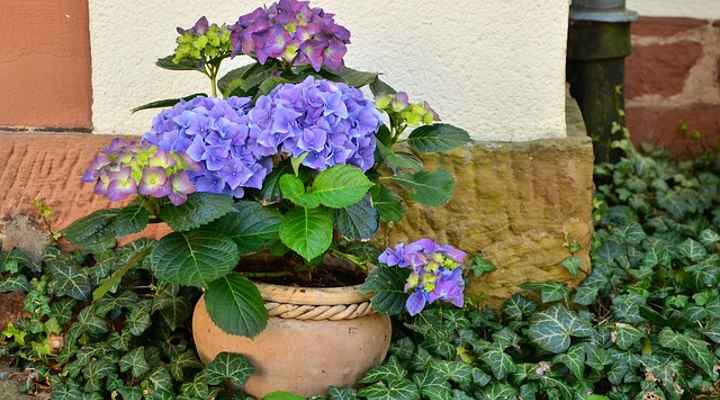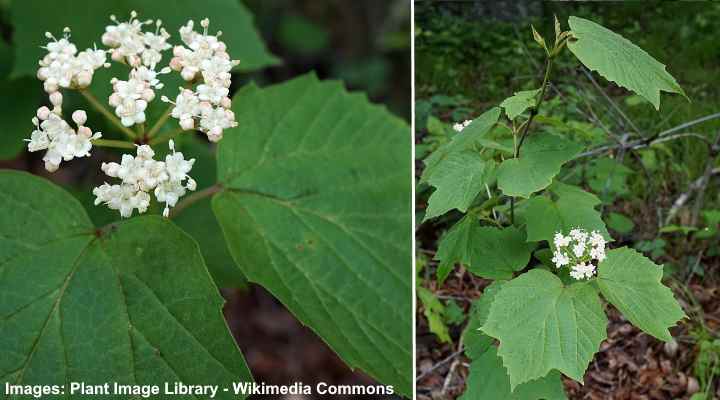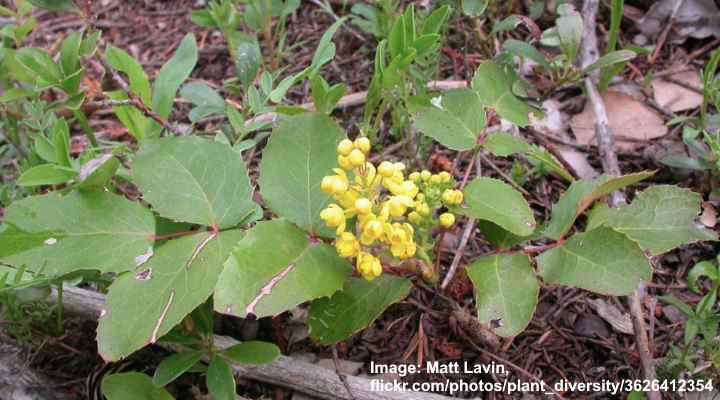Small Flowering Shrubs for Shade (With Pictures) – Identification Guide

Small flowering, shade-tolerant shrubs are perfect for filling your garden landscape with color, floral scents, and attractive plants. Small ornamental shrubs that thrive in the shade bloom with colorful flowers of pink, red, orange, yellow, purple, and white blooms. And despite growing in the shadows of taller trees and structures, many shade-loving flowering shrubs blossom throughout the summer in cooler climates.
Knowing how to pick the best shrubs for partial or complete shade is challenging. Many small ornamental shrubs rely on a few hours of sunshine daily to blossom. Thankfully, some various small, decorative shrubs and bushes bloom with a minimal amount of direct sunlight. You can even choose small, flowering evergreen shrubs for full shade.
This article is a guide to choosing suitable low-growing shrubs for shade gardens. To help decide which small flowering shrubs to grow, descriptions and pictures of shade-tolerant plants will help you choose. You will also find helpful growing tips about where to plant colorful shade bushes for landscaping.
How to Choose Dwarf Flowering Shrubs for Shade
Growing small flowering shrubs in shaded conditions requires choosing the right plants for your region. Therefore, it’s vital to consider factors like the USDA growing zone, soil type, pruning requirements, and the amount of sunlight. The best shrubs for shade are low-maintenance plants that require little care.
Full Shade, Partial Shade, Dappled Shade and Light Shade – Identification Guide
Light exposure levels required by various shrubs affect their planting location. Typically, shade-loving shrubs are divided into several categories—partial shade, dappled shade, and full shade. But it can be confusing to determine the difference between partial sun and partial shade.
Here is a short guide to knowing which type of small decorative flowering shrub is suitable for your front or back yard:
- Full sun—Shrubs need at least six hours of direct sunlight every day from 10 a.m. to 4 p.m.
- Partial sun—Flowering bushes should get between four to six hours of sunlight each day.
- Partial shade—Direct sunlight exposure should be limited to four hours of sunshine. The difference between partial shade and part sun is that shrubs benefit from a few hours of morning sunlight. However, they should be in the shade from midday until late afternoon.
- Dappled shade—Filtered sunlight created by the sun’s rays shining through foliage, leafy branches, or pergolas. This is a mixture of shade and light.
- Full shade—Shrubs for full shade usually require two hours of early morning sunlight or late afternoon sun. Typically, they should be in shadows or dappled shade for most of the day.
The Best Small Flowering Shrubs for Shade
The best small blooming shrubs for shade depend on your landscaping goals. For example, small azalea, camellia, and peony shrubs bloom with spectacular showy flowers, adding bright colors to shaded landscapes. Additionally, small flowering shrubs like Virginia sweetspire, summersweet, and hydrangeas are drought-tolerant bushy plants that don’t mind a lack of direct sunlight.
Types of Small Flowering Shrubs for Shade (With Pictures)
Do you want to fill a shaded landscape with small colorful bushes? What are the best flowering shrubs for partial, dappled, or full shade? How can you find the most fragrant ornamental shrubs for shade gardens? Please read on to find out.
Japanese Skimmia (Skimmia Japonica)

Japanese skimmia is a small flowering evergreen shrub that is easy to care for and loves shade
Japanese skimmia is a small evergreen shrub that produces clusters of pinkish-white flowers. Ideal for shade gardens, this slow-growing ornamental dwarf shrub is recognized by its fragrant racemes (flower clusters), leathery lance-shaped aromatic leaves, domed growth habit, and clusters of bright red berries.
Japanese skimmia ornamental shrubs grow 3 to 4 ft. (1 – 1.2 m) tall and 5 ft. (1.5 m) wide.
Japanese skimmia is a low-maintenance flowering shrub requiring no pruning to control its height. You can plant the dwarf, evergreen shrub as a foundation planting, shrub border, flowering specimen plant, or evergreen hedge. Because the white-blooming shrub thrives in full shade, you can plant it in a north-facing landscape.
USDA growing zones: 6 to 8
Soil: Fertile, moist, well-draining soils
Sun exposure: Partial sun, part shade, full shade
Virginia Sweetspire (Itea virginica)

The low growing sweetspire shrub is great for landscaping shaded compact gardens
Virginia sweetspire is an attractive small flowering deciduous shrub for deep shade. The upright, rounded shrub features attractive arching branches covered in lush foliage and clusters of white blossoms. The characteristic feature of the flowering shrub is spiked bottlebrush flowers that cover the shrub from mid-spring until early summer.
Dwarf varieties of Virginia sweetspire grow around 3 ft. (1 m) tall.
Identifying features of Virginia sweetspire include long-lasting white flowers and dark green lanceolate leaves that turn spectacular red and orange shades in the fall. The easy-grow small landscaping shrub has three-season visual appeal in garden landscapes.
As a 3-foot flowering shrub, you can grow Virginia sweetspire as a summer screen, informal hedge, foundation planting, or shrub border. It also looks attractive in mass plantings as a tall ground cover for shade.
USDA growing zones: 5 to 10
Soil: Medium to wet soil that drains well
Sun exposure: Full sun to complete shade
Summersweet ‘Hummingbird’ (Clethra alnifolia ‘Hummingbird’)

Clethra alnifolia ‘Hummingbird’ is a compact white flowering shrub that is suitable for both sunny and shady locations
Hummingbird summersweet is a small shade-loving flowering shrub with spikes of fragrant white flowers that bloom throughout the summer. The deciduous shrub is recognized by its glossy, dark green leaves with serrated edges and masses of long-blooming white flowers that give way to dark brown fruits.
The summersweet ‘Hummingbird’ cultivar is the dwarf variety. With its fragrant flowers, this compact, slowly spreading shrub grows 3 to 4 ft. (1 – 1.2 m) tall and up to 5 ft. (1.5 m) wide. It’s a robust, dependable shrub that blooms profusely in shady locations.
Summersweet ‘Hummingbird’ is the perfect ornament white-flowering dwarf shrub to attract pollinators. You can plant the shrub along shaded foundation lines, as an understory plant, or in mixed shrub borders for dramatic summer flowers. In addition, summersweet is a perfect shrub for planting near pools because it tolerates wet soil.
USDA growing zones: 3 to 9
Soil: Average to wet sandy soil
Sun exposure: Full sun, partial shade, full shade
Dwarf Flowering Camellia Shrubs

Low maintenance evergreen dwarf camellia shrubs are suitable for landscaping shaded gardens
Varieties of low-growing camellia shrubs produce showy, double blooms in beautiful pink, red, and white shades. Dwarf evergreen camellia landscape shrubs also have glossy green foliage, bold flowers, and a bushy growth habit. Small camellia shrubs have a long-blooming season and produce flowers for several months.
Dwarf varieties of camellia shrubs typically grow between 3 and 5 ft. (1 – 1.5 m) tall. There are two common varieties of these shade-loving landscape shrubs—Camellia japonica and Camellia sasanqua. From the two, Japanese camellias produce the showiest blooms with semi-double and double flowers in rosette patterns or with frilled, ruffled petals.
Some Japanese camellias and most Camellia sasanqua varieties have open flowers with large oval petals, some of which form cup shapes. Additionally, Camellia sasanqua is more shade tolerant than Japanese camellias and is suitable for partial sun to full shade.
You can grow camellia shrubs in mixed shrub borders, as evergreen flowering hedges, or as a specimen plant. The beautiful white, pink, and red landscaping shrubs produce dramatic winter blooms from October through March.
USDA growing zones: 7 to 9
Soil: Organically-rich, well-drained acidic soil
Sun exposure: Full sun, part sun, or full shade (check individual cultivars)
Dwarf Azalea Shrubs (Rhododendron spp.)

Flowering Azalea shrubs include small cultivars that will give stunning color to partially shaded garden
Many varieties of small azalea shrubs thrive in partial shade or full shade. Azaleas are characterized by glossy green, leathery leaves and showy funnel-shaped flowers. The spectacular blooms on the small ornamental shrubs blossom in colors including pink, red, white, purple, orange, and yellow.
Low-maintenance, dwarf deciduous or evergreen azalea shrubs grow 1 to 4 ft. (0.3 – 1.2 m) tall. You can plant azaleas as informal flowering hedgerows, specimen plants, foundation planting, in containers, or in a shade garden. The saucer-shaped or trumpets-shaped pastel-colored flowers produce sweet fragrance when in bloom during spring.
USDA growing zones: 4 to 9 (check individual cultivars)
Soil: Moist, well-drained soil
Sun exposure: Partial shade
Dwarf Japanese Pieris Shrub (Pieris japonica ‘Cavatine’)

The small flowering Pieris japonica ‘Cavatine’ shrub looks beautiful in any partly shaded front or backyard
The low-growing Japanese Pieris shrub is a compact, bushy plant with eye-catching clusters of white flowers. The attractive appeal of Japanese Pieris shrubs is their white bell-shaped fragrant flowers that dangle from arching branches. The white-blooming small shrub is well-suited to growing in partial shade.
Also called Japanese andromeda, the decorative landscape shrub grows 2 ft. (0.6 m) tall and 3 ft. (1 m) wide. You can plant the low-maintenance shrub at the front of house, along borders, or create a natural barrier beside a wall or fence. For best results, grow the small colorful bush in dappled sunlight.
USDA growing zones: 5 to 8
Soil: Humus-rich, well-drained soil
Sun exposure: Full sun to partial shade
Serviceberry ‘Regent’ (Amelanchier alnifolia ‘Regent’)

Serviceberry ‘Regent’ is a small flowering shade-loving shrub that is cold hardy
Serviceberry is a cold-hardy, shade-tolerant small shrub with clusters of small compact white flowers. Characteristics of the serviceberry cultivar ‘Regent’ are oval-rounded, serrated leaves that are dark green, turning to yellow in the fall. The clusters of white blossoms give way to purplish-black edible berries in summer.
Serviceberry ‘Regent’ is a deciduous early-flowering shrub that grows 4 to 6 ft. (1.2 – 1.8 m) tall. The blue-colored berries growing on the dwarf shrub resemble blueberries in color, size, and taste.
The compact serviceberry shrub ‘Regent’ is ideal for growing in mixed shrub borders, hedges, flowering screens, or foundation plantings. With its compact growth, the white-flowering ornamental shrub is also perfect for growing a natural windbreak planted close together.
USDA growing zones: 2 to 7
Soil: Moist, well-drained acidic soils
Sun exposure: Full sun to partial shade
Coastal Doghobble (Leucothoe axillaris)

Coastal doghobble has attractive white flowers and is small enough to decorate shaded gardens with a limited space
Also called fetterbush, coastal doghobble is a low-growing, shade-loving flowering shrub with pinkish-white blossom. The bell-shaped flowers bloom in spring and grow in attractive cylindrical clusters. The white flowers contrast nicely with glossy green foliage consisting of thick, leathery leaves. The four-season appeal of this small evergreen flowering shrub is its stunning winter colors with purplish-bronze foliage.
Coastal doghobble grows 3 to 4 ft. (1 – 1.2) tall and up to 6 ft. (1.8 m) wide. The compact, dense foliage of the small shrub makes it perfect for growing in shaded landscapes. You can easily grow the shrub along driveways, as ground cover, or for edging. Additionally, the compact flowering shrub is ideal for container gardens.
USDA growing zones: 5 to 9
Soil: Moist soil that drains well
Sun exposure: Part shade to full shade
Dwarf Fothergilla (Fothergilla gardenii)

Dwarf fothergilla flowering shrub can grow in full sun or partial shade
Dwarf fothergilla is an easy-care, deciduous shrub blooming with fuzzy white bottlebrush-like flowers. The small shrub grows best in dappled shade or protected from direct midday sunlight through the afternoon. The multi-stemmed flowering shrub grows 3 to 6 ft. (1 – 1.8 m) tall and wide. Being related to witch hazel, the white flowers have no petals but consist of spindly white stamens.
Also called coastal witch-alder, the small decorative flowering shrub is perfect for growing along a foundation line, as a low hedge, or in mixed borders. The white and green shrub has dramatic spring and summer appeal before turning stunning shades of orange, yellow, or red in the fall.
USDA growing zones: 5 to 9
Soil: Organically-rich soil with good drainage; tolerate occasional flooding
Sun exposure: Full sun to partial shade and dappled sunlight
Tree Peony (Paeonia suffruticosa)

Tree peony produces beautiful flowers to add pop of color to partial shaded locations
The tree peony is a dwarf multi-stemmed shrub with spectacular white, red, and showy pink flowers. The beautiful flowering bushy plant’s growth features are romantic, ruffled fragrant, spring-blooming flowers, green palmately compound leaves, and a bushy appearance. Tree peonies grow between 3 and 6 ft. (1 – 1.8 m) tall.
Despite its name, a tree peony grows as a mounded shrub, not a tree. You can plant the shade-tolerant shrub to add color to foundations, fences, walls, and garden landscapes. The eye-catching shrub with its stunning blooms makes for a beautiful specimen plant with white or pink flowers.
USDA growing zones: 4 to 7
Soil: Alkaline soil, constantly moist soil that has good drainage
Sun exposure: Full sun to partial shade
Dwarf Hydrangeas

Hydrangea shrubs include many shade-tolerant small cultivars with stunning flowers in a wide array of colors
Many varieties of dwarf hydrangeas perform well in shady spots. Hydrangeas are an excellent addition to a colorful garden landscape due to their huge, showy flowers, lush foliage, and attractive shape. Dwarf hydrangeas grow 3 to 5 ft. (1 – 1.5 m) tall and are ideal for small, compact gardens.
For example, big leaf hydrangeas perform well in almost any shade setting. Mountain hydrangeas are ideal for dappled sunlight and partial shade. And shrub hydrangeas thrive in partial shade or full sun.
Dwarf hydrangeas are one of the few blue-flowering shrubs for shaded gardens. Other landscaping ideas for small hydrangea varieties include planting in mass to line driveways or paths, foundation plantings, and planting in pots in container gardens.
Related reading: How to care for hydrangeas in a garden landscape.
USDA growing zones: 3 to 9 (check individual cultivars)
Soil: Most types of well-drained soil; note that soil acidity and alkalinity affect bloom colors
Sun exposure: Partial sun to shade (check individual cultivars)
Maple Leaf Viburnum (Viburnum acerifolium)

Mapleleaf viburnum is a small shrub for shade with white flowers and foliage that is similar to maple leaves
Maple leaf viburnum is a small, white-blooming suckering shrub with deciduous foliage. The maple leaf variety (Viburnum acerifolium) is the most shade-tolerant of all the shrubs. This cold-hardy flowering shrub is identified by attractive clusters of white flowers, maple-shaped leaves, and bluish-black berries. The shrub for shade gardens grows 4 to 6 ft. (1.2 – 1.8 ft.) tall.
There are several reasons to grow maple leaf viburnum in a shade garden. First, the mounding, multi-stemmed shrub has beautiful pink, purple, and orange fall colors. Additionally, the white flowers provide spring and summer interest, and the dark berries persist until winter.
USDA growing zones: 4 to 8
Soil: Average soil that has good drainage
Sun exposure: Dappled shade or partial shade
Creeping Mahonia (Berberis repens)

Creeping mahonia is a flowering ground cover shrub for shade with yellow flowers
Creeping mahonia is a small yellow-flowering shrub for partial shade that performs well in most conditions. The evergreen, ground cover shrub blooms in spring with clusters of yellow flowers. The golden yellow blooms stand out against the bluish-green foliage growing on prickly thorns. In the fall, the blossoms turn into attractive edible blue berries.
Creeping mahonia grows up to 1.5 ft. (0.45 m) tall and wide. The bush spreads through stolons, creating an attractive ground cover of lush foliage, white spring flowers, and dark blue berries.
Also called creeping hollygrape, this evergreen ground cover shrub for shade brightens up shaded areas of garden landscapes. With its yellow flowers and bluish berries, the shrub is perfect for growing under larger shrubs, along borders, or in woodland gardens.
USDA growing zones: 4 to 9
Soil: Organically-rich soil with good drainage; the shrub is drought tolerant
Sun exposure: Full sun, partial shade, deep shade
Related articles:
- Flowering Perennials for Shade
- Ground Cover Plants for Shade
- Small or Dwarf Evergreen Shrubs for Shade
